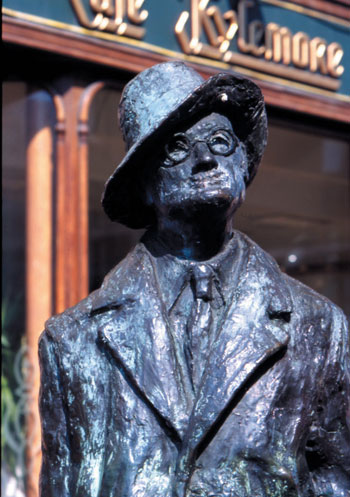Dublin and the South East
 Dublin, in the South East of Ireland, is a very attractive city with many facets.
Dublin, in the South East of Ireland, is a very attractive city with many facets.


 It is the political centre and economic heart of the country and a large part of Ireland's population live in and around the city. Dublin is also a shop window for what is called "the traditional Irish way of life". Most of the cultural and particularly sporting activities in the country are centred in the capital. Nevertheless, everybody agrees that Dublin is one of the rare European metropolises to remain on a human scale. A city which is welcoming, open and friendly: where you feel like staying for a while.
It is the political centre and economic heart of the country and a large part of Ireland's population live in and around the city. Dublin is also a shop window for what is called "the traditional Irish way of life". Most of the cultural and particularly sporting activities in the country are centred in the capital. Nevertheless, everybody agrees that Dublin is one of the rare European metropolises to remain on a human scale. A city which is welcoming, open and friendly: where you feel like staying for a while.
The most famous tourist attractions are on the South bank of the river Liffey, starting with the 18th-century squares and houses, a brilliant and splendid example of Georgian architecture. The most famous for art lovers is Merrion Square; then there is Trinity College, the cultural centre of the country for centuries; or major museums like the National Gallery and the National Museum. Old Dublin – where the Vikings first settled – has a real historical interest as well as being a tourist attraction: with Dublin Castle, the Chester Beatty Library, Saint Patrick's Roman Catholic Cathedral, named after Ireland's Patron Saint, and the Protestant Church of Ireland Christ Church Cathedral. Don't forget to wander around Temple Bar, a model of urban rehabilitation, having preserved its medieval street pattern and with many narrow cobbled streets. Now "Dublin's cultural quarter" it has a lively night-life with lots of pubs and restaurants. Very Irish!
There are many other places to go and things to do in Dublin: the areas North of the Liffey with O’Connell Street and Parnell Square; the port with its 18th century neo-classical Custom House and replica of the famous Jeannie Johnson tall ship which carried thousands from Ireland to the "New World" of North America to escape the hardships of famine; beautiful parks and gardens, such as Phoenix Park one of the largest walled city parks in Europe, and the National Botanical Gardens; Dublin Bay with the peninsula of Howth Head complete with 14th century Castle in the North, and the 12th century Malahide Castle and gardens and the Palladian style Castletown House in the South.
° The South-East (*)
North of Dublin, the valley of the river Boyne provides many cultural and historic places to visit: particularly Neolithic sites with megalithic tombs such as Bru Na Boinne and the gallery tomb of Newgrange, both more than 5,000 years old; Celtic crosses at Monasterboice and Kells, etc.
South of the capital, the County of Wicklow is a haven for nature lovers and ramblers with hilly landscapes, forests, lakes and waterfalls, splendid gardens and castles and the Early Medieval monastic settlement of Glendalough founded in the 6th century by Saint Kevin. Even further South the charming port of Wexford is the starting point of a picturesque coastal path subjected to the vagaries of the ocean and joining beaches, creeks, dunes, cliffs, headlands and promontories in a vibrant summary of classic Irish coastline.
Other areas are worth visiting too, such as County Kilkenney and its eponymous county town, the ancient capital of a Celtic kingdom, with a medieval castle and town centre.
Photos © Tourism Board of Ireland
(*) comprises the 12 counties of the ancient historical province of Leinster
Tourism board of Ireland
Luxury hotels and designer Bed and Breakfasts, Business hotels and Secret places










